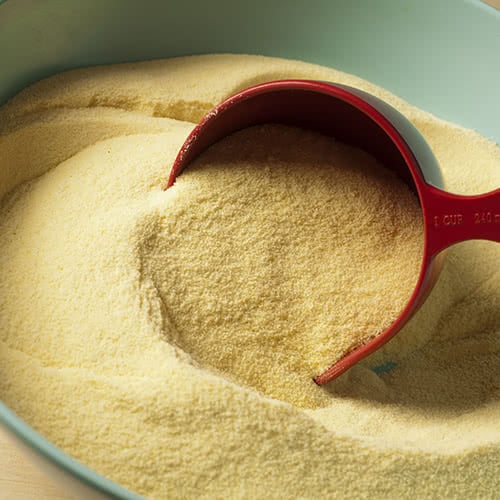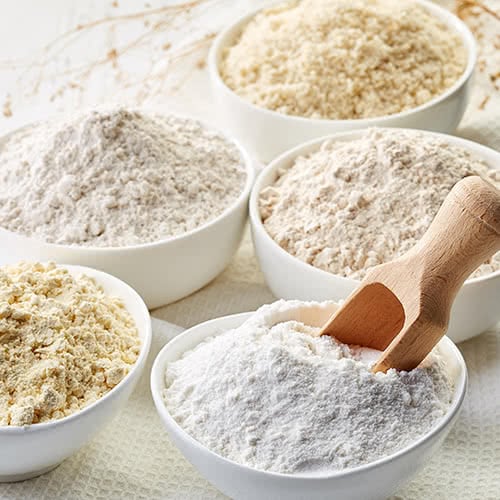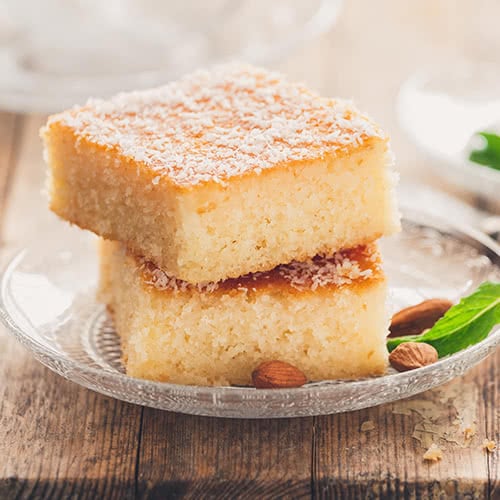What is Semolina?
As a staple of many popular Italian recipes, semolina is a hard flour used to make many types of pasta and bread. Whether you're a bakery owner or operating an Italian restaurant, semolina flour can help you craft a mouth-watering menu and is vital to keep in your kitchen. To ensure you can accommodate guests with dietary restrictions, check out our list of semolina flour substitutes for gluten-free baking.
Semolina Flour Definition

Semolina flour is a coarse, pale yellow flour made from durum wheat. Durum wheat is the hardest species of wheat, meaning it has a high protein and gluten content and is highly resistant to milling. The milling process of durum wheat results in gritty wheat middlings, known as semolina flour.
What Does Semolina Taste Like?
Semolina flour has a slightly nutty, sweet taste and a coarse texture similar to cornmeal. These qualities make corn flour a popular substitute for semolina.
Durum vs Semolina
The difference between durum and semolina flour lies in the consistency of the flour. A byproduct of the milling process to create semolina is durum flour, an even finer flour. Durum flour may be milled multiple times once separated from the coarse wheat middlings (semolina). Durum flour is fine, smooth, and resembles traditional baking flour, whereas semolina flour is much coarser. However, both flours still have high gluten and protein content. Both semolina flour and durum flour are base ingredients when making pasta and types of bread, though durum flour may be used more often for bread-making.
Semolina vs All Purpose Flour
While all-purpose flour is a common substitute for semolina flour, semolina contains several significant distinctions that affect baked goods. In addition to its golden hue, semolina flour has a nutty flavor and more protein than all-purpose flour. Its gluten protein content creates an elastic dough, perfect for kneading and stretching for pasta.
In contrast, neutrality defines all-purpose flour. It lacks the distinct flavor of semolina and has an average protein content. Its color fluctuates between an off-white and bleached white depending on how it's refined and processed. Due to these qualities, using all-purpose flour to make pasta requires significantly more effort with less delicious results.
What to Use as a Semolina Flour Substitute

Below is a list of different types of flour that substitute for semolina flour. Typically, the best semolina flour substitutes have a high protein content to yield baked goods without significant differences. Several options are gluten-free to accommodate guests with dietary restrictions and preferences. You can always combine different types of flours to find the right flavor and texture of your preference.
- Durum flour: Use durum flour for pasta, couscous, and bread.
- All-Purpose Flour: Use all-purpose flour for pancakes, cookies, waffles, and other fluffy baked goods. Pasta made with all-purpose flour will be softer than semolina flour pasta.
- Spelt Flour: Use spelt flour for bread, cookies, muffins, and waffles. The texture of baked goods made with spelt flour is more gummy than semolina.
- Kamut Flour: Use kamut flour for bread, muffins, and scones. However, this flour is drier than semolina, so you might need to add extra eggs to maintain the right consistency.
- Rice flour: Use rice flour for noodles, and to thicken soups and stews. It's also gluten-free and works well in delicate food products like cakes and pastries.
- Amaranth Flour: Use amaranth flour for pasta, baking, and as a thickener. Like rice flour, amaranth flour is gluten-free.
- Quinoa Flour: Use quinoa flour for gluten-free pasta and baked food items, like cookies. Baked goods made with quinoa flour tend to be crumbly, so add other starches to better emulate semolina flour.
- Garbanzo Flour: Use garbanzo flour for gluten-free pasta or bakery products. Its high protein content and natural binding agents make it one of the best semolina substitutes.
- Corn Semolina: Use corn flour to emulate the texture of semolina. The dish will taste like corn and will be gluten-free.
Semolina Flour Uses

Semolina is used to make a variety of dishes. The high protein and gluten content of semolina flour means it is uniquely ideal for pasta-making, as these properties help to shape the pasta and maintain its shape when cooked. Semolina flour can also add a crispy crunch to pizzas and bread and yields dense, grainy, and nutty desserts. Below are some common uses for semolina flour.
- Sooji upma: A thick porridge and traditional Indian breakfast dish
- Semolina cakes, such as namoura, basbousa, and harisseh
- Semolina pudding or hot cereal: Semolina simmered in milk or water with sugar and toppings of choice
- Pasta, primarily Italian varieties
- Couscous
- Bulgur
- Gnocchi
- Coated on a baking surface to prevent sticking
- Sprinkled on potatoes for extra crunch
- Coated on fish before pan frying for a crispy coating
- Added to bread dough for crusty, tasty texture and crust
Semolina flour adds a unique flavor, dense structure, or coarse texture to baked goods, pizza, pasta, and bread. While there are several substitution options for gluten-free customers, semolina's unique properties are challenging to replace in finished products. Whether you want to make homemade pasta or try some new authentic Italian recipes, stock up on semolina flour for your cooking and baking needs.



